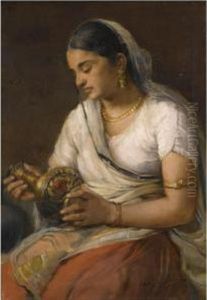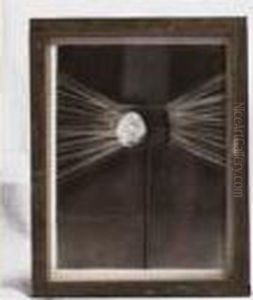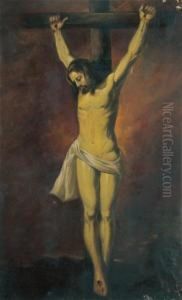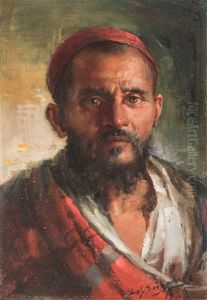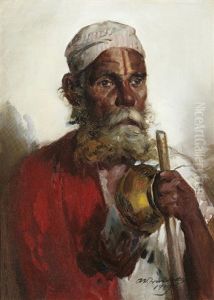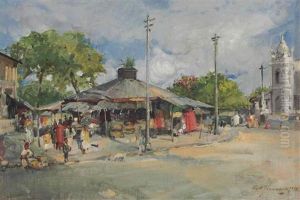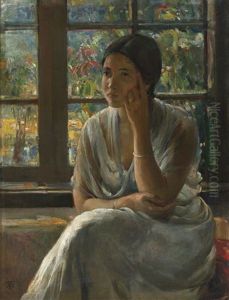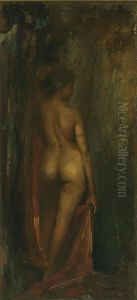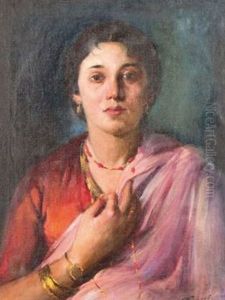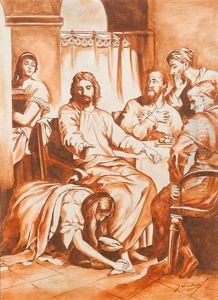Antonio Xavier Trindade Paintings
Antonio Xavier Trindade, born on April 17, 1870, in Goa, then a Portuguese colony in India, was a prominent Indian painter known for his portraits and figure studies. Trindade's artistic journey began at the Sir J.J. School of Art in Bombay (now Mumbai), where he not only graduated with honors but also secured a position as a professor, significantly influencing the art scene of his time.
During his tenure at the J.J. School of Art, Trindade's teaching and artistic practices had a profound impact on generations of students. His style, characterized by realistic depictions and a masterful handling of light and shadow, drew inspiration from academic realism. His portraits often captured the essence of his subjects with a remarkable sensitivity, and his works reflected the socio-cultural milieu of early 20th-century India.
Trindade's subjects ranged from the everyday life of local Maharashtrian people to the depiction of biblical scenes, showcasing his versatility and skill. Despite his Goan Catholic origins, his art transcended religious boundaries and reflected the diverse tapestry of Indian culture. His works were exhibited not only in India but also internationally, earning him considerable acclaim.
His artistic contributions were recognized by the British colonial government, and in 1929, he was awarded the title of Rao Bahadur, an honorific denoting his prominence in the field of art. Trindade continued to paint and teach until his death on January 16, 1935, in Bombay. His legacy lives on through his paintings, which are held in high esteem and can be found in various art collections, both in India and abroad, including the prestigious National Gallery of Modern Art in New Delhi.
